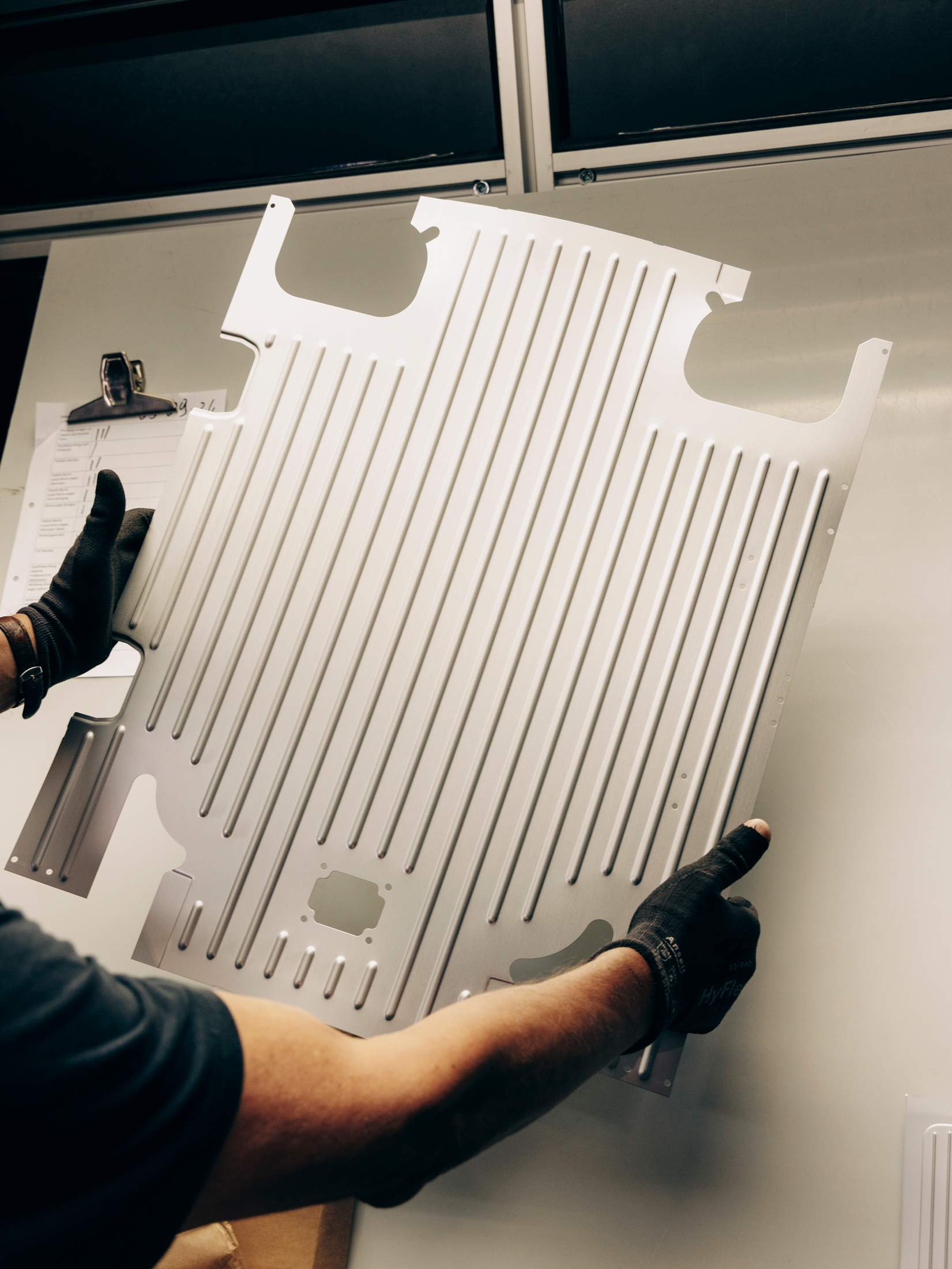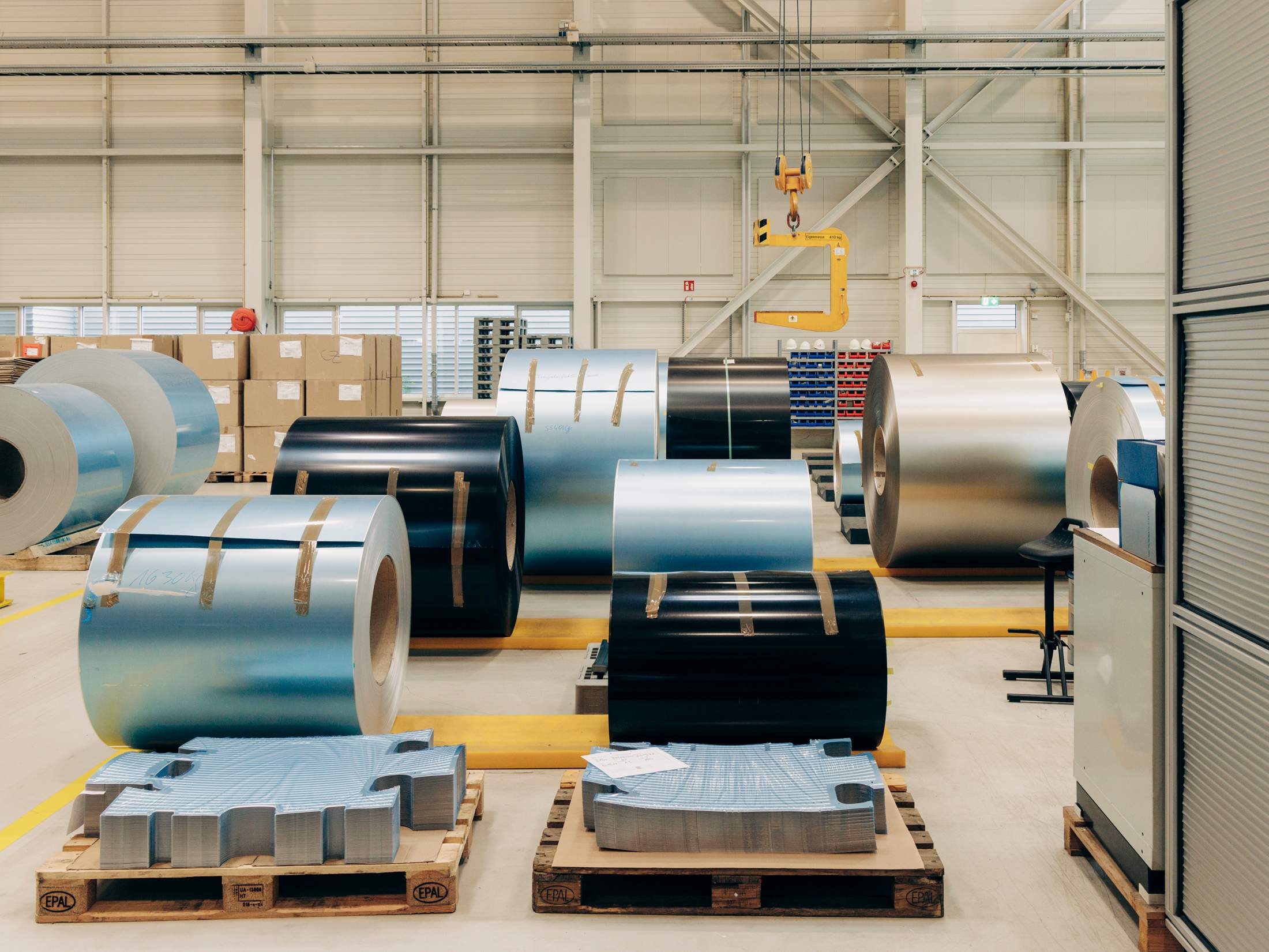Luggage / Germany
Carrying cachet
The launch of its first-ever handbag is a statement of intent by storied German luggage maker Rimowa, as it employs its expertise in aluminium design and manufacturing to diversify into a new, luxurious category catering to a society on the move.

On any given day, if you’re on a train between Köln and Paris, you’re likely to spot plenty of hard-shell Rimowa suitcases in the overhead compartments. But when entire carriages seem loaded with the German company’s wares, it’s probably a sign that the brand has been gathering its team for an all-hands meeting. Lately, this back-and-forth between its factory in Ossendorf, just outside Köln, and its creative offices in central Paris has been occurring at a much higher frequency than usual. All of this activity is in preparation for one of the brand’s most significant launches to date: its debut handbag and, notably, its first foray outside the travel sector, in which it has been operating for the past 126 years.

“It’s a leap of faith,” says Rimowa’s ceo, Hugues Bonnet-Masimbert. “Historically, our products have been associated with going to the airport or the train station but we felt the urge to enter daily commuting too.” The new bag, dubbed the Original, looks like Rimowa’s signature aluminium suitcase but it has been sized down to snugly fit an A5 book. It can be carried by leather handles or over the shoulder on a canvas strap. Getting its shape just right took more than two years. “We iterated an incredible number of times,” says Bonnet-Masimbert. “There were hours of meetings between crazy engineers, designers and myself.”
Bonnet-Masimbert meets monocle in Ossendorf, an industrial area with an unusual preponderance of factories built from grooved metal. There’s a delegation from Paris here and an excited bustle all around the campus. On the factory floor, a team assembles the Original bags that are due for delivery. In one corner, curved aluminium shells are attached and equipped with corner plates and handles. Across the room, the bag is fitted with a leather interior. The design has already made a high-profile cameo in Pedro Almodóvar’s latest Golden Lion-winning film, The Room Next Door, in which Tilda Swinton opens the bag and lets out a scream – in awe of the buttery leather lining, perhaps. The following day, it will make its way to Rimowa shops worldwide, including a dedicated pop-up in Shenzhen. It will also feature on billboards across the globe, including Berlin, Dubai and London.


Rimowa had already been working on expanding its product line to soft bags, such as canvas backpacks and weekender totes, as well as the clutch-sized Personal bag, which comes in both polycarbonate and aluminium. However, these were conceived and marketed as accessories to the suitcases, meant for carrying passports and other essentials while in transit. “In a way, they were easier to do,” says Bonnet-Masimbert. “But deep down, I’ve always wanted to make a handbag using our expertise.” It’s why the launch of the Original carries such weight for the business. It would be easy to dismiss it as a new size in an existing design – but it reflects the company’s broader ambitions to build its reputation beyond luggage and claim a stake in the competitive luxury handbag category, long ruled by Dior, Louis Vuitton and Celine, its sister brands in French conglomerate lvmh.
Even for a storied business such as Rimowa, successfully orchestrating this kind of pivot can take years of perfecting the design, working with suppliers and crafting the right marketing strategy. In fact, Rimowa has been planting the seeds of a new category launch for years. Ever since it was acquired by lvmh in 2016 (Alexandre Arnault, one of the youngest scions of founder Bernard Arnault, had long been a fan), the brand embarked on a big marketing push. It released partnerships with the likes of Supreme, Fendi, Off-White and Dior, brought most of its distribution in-house and, this spring, opened a pop-up café in partnership with La Marzocco during Milan’s Salone del Mobile. “We dabbled in the fashion space but mostly through collaborations,” says Bonnet-Masimbert, who took the reins in 2021. “Now, we are flying with our own wings.”
To be in a position to soar, Bonnet-Masimbert has been making changes inside the Rimowa campus, which has close to 700 employees. By optimising workflow and increasing the number of production lines, it has more than doubled manufacturing capacity. In the dedicated accessories section, the team has been producing small goods such as phone cases ahead of its big handbag debut. “Even our iPhone cases are made in the factory,” says Bonnet-Masimbert. “That is very unusual for the industry.”
Investing in German design and manufacturing has allowed the brand to differentiate its new handbag from competitors. For Bonnet-Masimbert, the bag’s inherently German, function-first design is its strongest selling point. He has long had a deep-seated understanding of German consumer and manufacturing values, having spent years working as a shop manager in German cities including Köln, where he was once the sales advisor of the Louis Vuitton boutique. So when he embarked on the very French endeavour of making a fashionable handbag, he ensured that the brief was tailored to Rimowa’s design dna.
“We wanted it to be both premium and functional,” he says. “Part of the headache we gave our designers was that it should be suitable for going to work, as well as to yoga and to a wedding.” The bag also needed to be unisex – unlike most luxury fashion, which is skewed towards women’s ready-to-wear and accessories, Rimowa’s customer base is split evenly between men and women. Finally, it had to be made in Köln.
Fulfilling the brief required a lot of back-and-forth between Rimowa’s design team in Paris and the r&d and engineering departments in Köln. “Producing small aluminium objects is a huge technical challenge,” says Bonnet-Masimbert. “The world of daily commuting also has a much wider scope of functionality and higher aesthetic requirements,” he adds, pointing to the numerous technical challenges that tested the Rimowa team throughout the development process.
During the early stages, the team realised that the process couldn’t easily be repeated at such a small scale and sought the help of another German company specialising in moulding aluminium objects. Switching from a canvas to a leather lining also offered another steep learning curve. The classic Rimowa clasps wouldn’t work, either – they looked clunky and required two hands to open. The solution? A new lock that lets the bag pop open at the press of a button. “At some point, you’ll be pushing your bike with one hand and then you need to open this bag,” says Bonnet-Masimbert. “It might all sound trivial but we debated every little detail.”
This kind of design process is uncommon, even in luxury fashion. For starters, the making of most handbags does not involve engineers. But going the extra mile has paid off. Unlike traditional luxury bags, seen as status symbols that are too precious to touch the ground, Rimowa’s Original can take more than a few blows. “In our minds, there is sheer beauty in a bag that ages,” says Bonnet-Masimbert, who is always looking for ways to connect the dots between the different categories and honour the company’s founding values.


In some ways, he says, the Original represents a return to Rimowa’s roots. The oldest piece in the brand’s archive, from the early 1900s, is a ladies’ baguette handbag, prophetically made from ribbed leather, resembling the now-famous grooves on its aluminium luggage. It also aligns with the brand’s commitment to serving all facets of contemporary mobility. According to the ceo, people are taking more trips and they see less of a distinction between travelling and being at home – they’re just always on the move. So it makes sense to offer a product that can be carried around in daily life. “When you’re a 126-year-old brand, you’ve accompanied people from riding horses to flying into space,” he says. “We’re trying to imagine new travel philosophies.”
The timing of the launch taps into a broader momentum in German design. “There is something extremely contemporary about the value of most exclusive German brands,” says Bonnet-Masimbert, listing Porsche, Mercedes-Benz, Leica and Birkenstock. “The ability of German product design to deliver on not just aesthetics but also on performance, longevity and durability – it echoes the aspirations of people all around the world.”
These values will help to guide Bonnet-Masimbert’s decisions as he develops the brand’s product ranges further. He has already installed a team of engineers to work on new projects and plans to open an innovation building on the Ossendorf campus by 2026. As the worlds of fashion and travel continue to evolve, there’s plenty left to explore but Bonnet-Masimbert says that nobody should expect Rimowa to follow in fellow lvmh brands’ footsteps and start offering fully fledged runway collections or seasonal items any time soon. “We’re different. Our dna is deeply connected to our history and industry know-how.” His approach is proof that no matter the size or age of a brand, diversifying takes time – and only those that are patient will be able to guarantee their businesses’ futures. — rimowa.com
Five lessons for entrepreneurs looking to diversify their brands:
1. Stick to your expertise
A complete overhaul is rarely a good idea. Think about what your company is really skilled at and how that might be employed in a new category.
2. Don’t outsource
It might be easy to simply stick your logo on items that you’ve had produced in a foreign factory – but your customers will notice.
3. Set your own pace
Think carefully before committing to the frenetic calendars of trade fairs or fashion weeks. Nobody needs more hastily designed stuff.
4. Stay true to your roots
Customers can relate to a new product more easily if it somehow connects back to a company’s heritage. Many good ideas also come from digging through the archives.
5. Look for inspiration outside your industry
Rimowa was just another luggage manufacturer before its aviation-obsessed owner decided to emulate an aeroplane’s aluminium hull.


